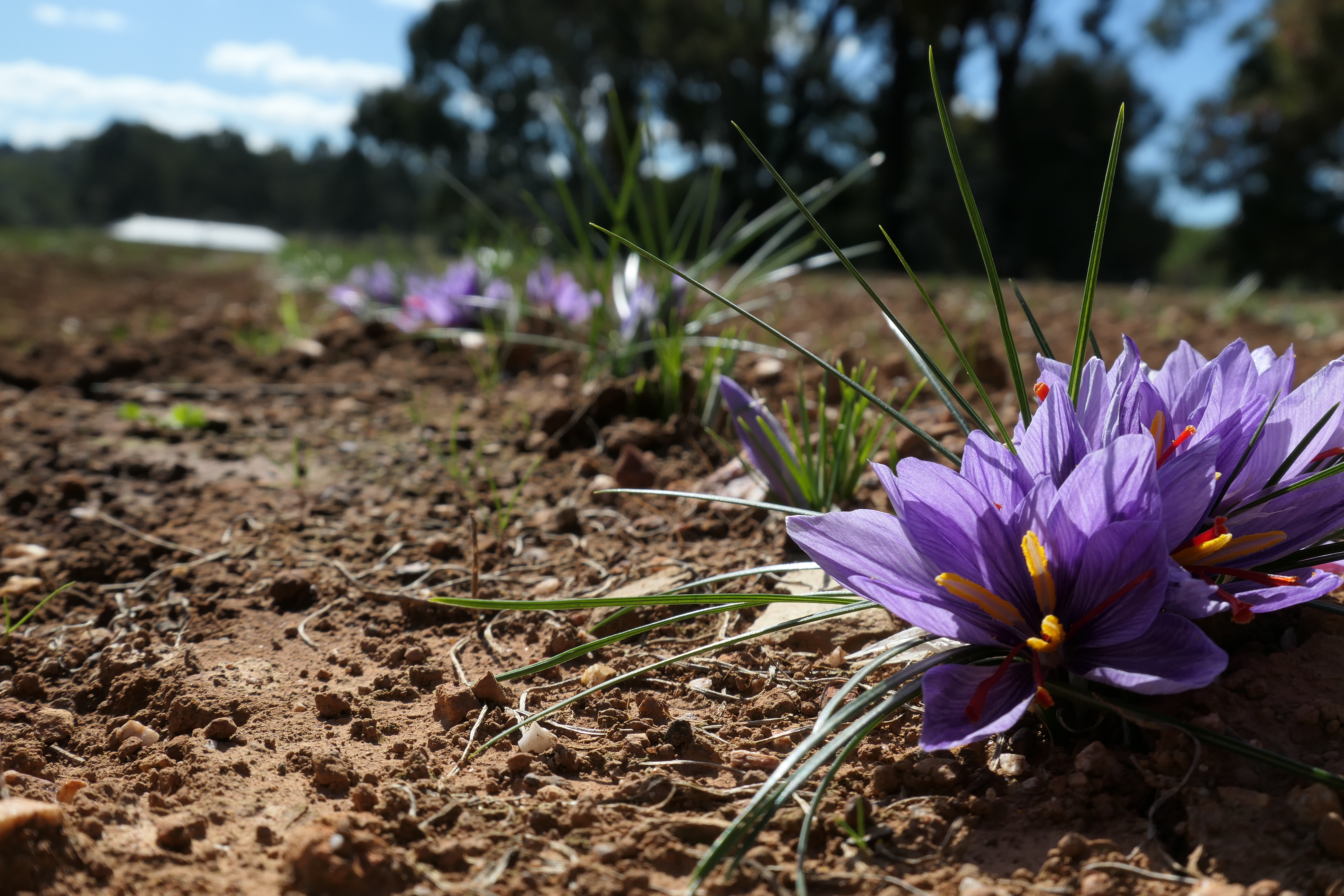How to grow saffron (crocus sativus)
- Home
- In Conversation
- Saffron
- How to grow saffron (crocus sativus)
How to grow saffron (crocus sativus)

What is crocus sativus
Saffron is an autumn flowering crocus. It dies down during summer, and then in March, when the nights start getting cold, up will pop the first green tips. Flowers will generally follow about 3-4 weeks later, however this is very dependent on weather and corm size. The saffron ‘grass’ (what we call the leaves) will then grow all winter and die down in early spring.
Saffron reproduces by replication, i.e. the corms divide and create daughter corms, which means every 3 years you should lift your corms and divide them up, this ensures they have room to grow and reduces the risk of disease. Each corm generally produces one flower per season.
How to grow saffron
You can plant them in the ground or in a large deep pot. Regardless of which option you choose, good draining is critical to being successful. Plant your corms approximately 10cm deep and at least 10cm apart, don’t water them in, any time from late December through till early March.
![]() The ideal saffron climate has cold winters, hot summers, and autumns that have cold nights and warm days. Choose a sunny site away from objects that hold temperature, e.g a north facing brick wall. Saffron will grow in a wide range of climates, however the climate does affect their flowering.
The ideal saffron climate has cold winters, hot summers, and autumns that have cold nights and warm days. Choose a sunny site away from objects that hold temperature, e.g a north facing brick wall. Saffron will grow in a wide range of climates, however the climate does affect their flowering.
![]() Soil should have a neutral pH, eg where your roses are happy, or your hydrangea flower pink. It should be well draining, have low organic and some slow release bulb fertiliser.
Soil should have a neutral pH, eg where your roses are happy, or your hydrangea flower pink. It should be well draining, have low organic and some slow release bulb fertiliser.
![]() Water once in late February, this will help the corms to awaken. If in a pot, water once a week post the initial watering until late April. If in the ground, water as necessary. After flowering, water once with diluted Seasol in May and once in August. Do not water after the corms have died down as they are going through their ‘baking’ stage. Any natural rain is fine.
Water once in late February, this will help the corms to awaken. If in a pot, water once a week post the initial watering until late April. If in the ground, water as necessary. After flowering, water once with diluted Seasol in May and once in August. Do not water after the corms have died down as they are going through their ‘baking’ stage. Any natural rain is fine.
![]() Saffron flowering is dependent on the weather, the nights need to be down to single digits, while the days are still sunny and above 20, hence saffron is often grown in alpine regions. Flowers will emerge during the night and should be picked first thing in the morning whilst they are still buds.
Saffron flowering is dependent on the weather, the nights need to be down to single digits, while the days are still sunny and above 20, hence saffron is often grown in alpine regions. Flowers will emerge during the night and should be picked first thing in the morning whilst they are still buds.
![]() Once you have picked your flowers, you can peel the petals open and pinch out the three red stigmas or saffron strands. You can use these fresh, which reduces the need to soak your saffron prior to use, or you can dry them on some kitchen paper in a sunny spot or in an oven at about 75C for a short time, then store them in a glass jar in a dark spot for later.
Once you have picked your flowers, you can peel the petals open and pinch out the three red stigmas or saffron strands. You can use these fresh, which reduces the need to soak your saffron prior to use, or you can dry them on some kitchen paper in a sunny spot or in an oven at about 75C for a short time, then store them in a glass jar in a dark spot for later.

